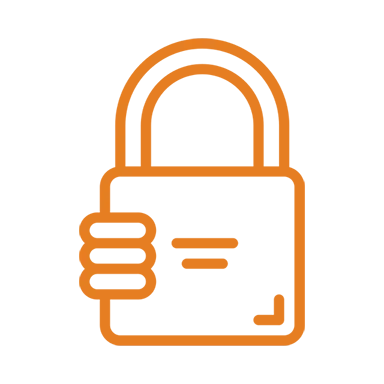
RFID and NFC are both wireless communication technologies that use radio waves to transfer data. Currently used in a wide range of industries, and both technologies offer tangible solutions. However, there are some key differences between the two technologies. In this article we’ll explore the differences between NFC and RFID, and how organizations can use this kind of tech to improve operational efficiencies.
What is NFC?
NFC stands for near field communication, and is actually a fine-tuned subset of RFID that operates within the high frequency range. The underlying technology is similar to Bluetooth or Wi-Fi, and many smartphones support NFC with the introduction of Android 10.
When an NFC device, like a smartphone, gets close to a contactless tag, it induces power in the chip to enable communication. This communication can take the form of reading or writing data. It can also include card emulation and peer-to-peer data exchange.
NFC Tag Use Cases
- Payment: NFC tags can be used to make payments with mobile devices. For example, you can use your smartphone to tap an NFC tag at a store to pay for goods or services.
- Marketing: NFC tags can be used to deliver marketing messages to consumers. For example, you can use an NFC tag to tap your smartphone to learn more about a product or to receive a discount.
- Customer service: NFC tags can be used to provide customer service. For example, you can use an NFC tag to tap your smartphone to get help from a customer service representative or to get a refund.
- Entertainment: NFC tags can be used to deliver entertainment content to consumers. For example, you can use an NFC tag to tap your smartphone to play a game or to watch a video.
A good example of this is tapping a phone to a payment terminal to initiate a contactless payment. NFC payments can be completed in a fraction of the time it takes to swipe magstripe or chip cards, and are leagues faster than cash. NFC offers more functionality than RFID, too, as it can deliver URLs and App-links to digital content and immersive post-sale product experiences. This makes it a great choice for millennial-facing brands and companies that want to bridge the gap between their online and offline words.
What is RFID?
Unlike barcode scanners that require an operator’s line of sight, RFID readers can send and receive data from any position. The hardware is compact enough to be embedded in handheld devices like those used in retail picking and order fulfillment, enabling workers to scan items without moving or repositioning themselves.
Using RFID, retailers can minimize out-of-stock situations and track inventory down to the rack or shelf. For example, apparel wholesaler Advanced Apparel uses RFID to pinpoint where each item is located in the warehouse and provide customers with accurate information on stock details.
RFID Use Cases
- Asset tracking: RFID tags can be used to track the movement of assets, such as inventory, equipment, and vehicles. This can help to improve inventory accuracy, prevent theft, and optimize supply chain operations.
- Access control: RFID tags can be used to control access to buildings, rooms, or vehicles. This can help to improve security and prevent unauthorized access.
- Logistics: RFID tags can be used to track the movement of goods and products. This can help to improve inventory accuracy, prevent theft, and optimize supply chain operations.
- Healthcare: RFID tags can be used to track the movement of patients, equipment, and supplies. This can help to improve patient safety and optimize healthcare operations.
Active RFID tags have a built-in battery and transmit pings of data every few seconds, which can be received at a far greater range than passive tag data, and also provide real time visibility. This can be a benefit in some applications, but the increased frequency of activity can deplete batteries faster. Choosing a reader that gathers tag data one at a time can help mitigate this issue.
NFC VS RFID (A Comparison)
| Feature | RFID | NFC |
| Power Source | Passive (powered by the RFID reader) or Active (battery powered) | Passive (powered by the NFC reader) |
| Data transfer rate | Up to 100 kbps | Up to 424 kbps |
| Range | Up to 10 meters | Up to 4 centimeters |
| Ideal Applications | Tracking goods and products, controlling access | Mobile payments, sharing contact information |
NFC is better suited to small devices like smartphones and tablets. It can operate at short distances, and it is able to read tags without a line of sight. NFC technology also supports one-way communication, and it is able to write data to a tag with specialized equipment.
RFID can work at long distances, but it requires a direct line of sight to read tags. It can also scan many tags at once, making it well suited for high-volume users, such as warehouses and baggage handling. RFID can also record a product’s history to give supply chain leaders more insight into its shipping process.
RFID is also commonly used in access control and in applications where the information stored on a tag must remain private, such as medical records. It is also useful for a variety of consumer applications, including contactless payments and mobile wallets. Unlike NFC, RFID can transmit more complex data, such as barcodes and images.
Conclusion
The cost of NFC or RFID development can vary depending on factors such as the size of the system and the complexity of the issues designers will have to solve. It also depends on whether developers can use off-the-shelf components or if they have to design their own. This is especially true if a device needs to be made waterproof.
NFC is a more streamlined form of RFID technology that operates within the same frequency range but is able to perform two-way communication. This allows it to be used for a variety of purposes such as product labels, posters and even for contactless payment and transport cards products such as:
- Go Card
- Opal Card
- Myki.
RFID, on the other hand, is an established technology that can operate at a wide range of distances and supports one-way communication. This makes it ideal for tracking and managing assets across large spaces, especially if your business relies on high-volume logistics.
















